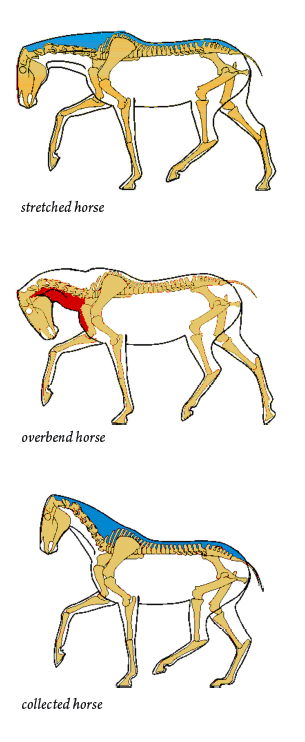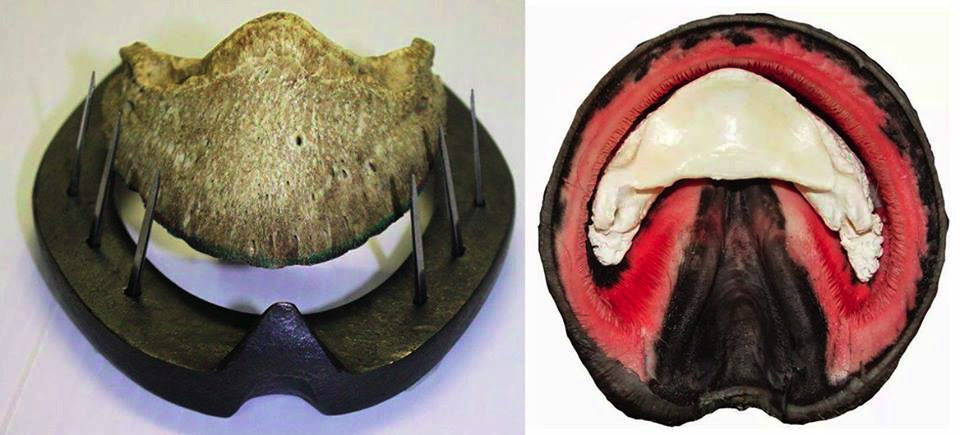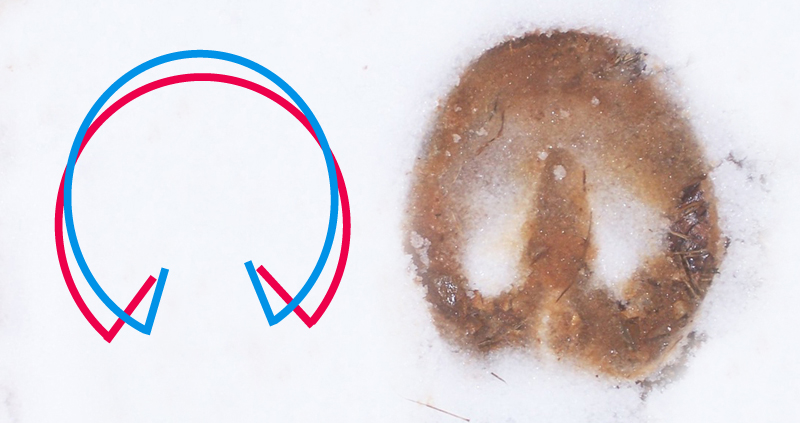Horses have more weight at the front than at the back because of the weight of the head and neck. For some reason the front legs are not equipped as shock absorbers because of the way they are built.
The hind legs however can bend like an accordion and can function for the horse like the suspension does for a car. It looks like nature has made a mistake by putting the suspension at the hind end, while most of the weight is in the front. But as always, she has not. Nature has evolved a way for horses to absorb any shocks and weight with the hind quarters, even though it is the head that goes down.
 This system is based on the horses stretching the neck – for instance while they are grazing. When the horse stretches the neck and head forward and down this pulls on a ligament which attaches the base of the horses skull to the withers. This ligament is called the nuchal ligament or neck-back band. When this ligament is stretched, the muscles on the top of the neck are activated and the withers are lifted up, at the same time lifting the ribcage.
This system is based on the horses stretching the neck – for instance while they are grazing. When the horse stretches the neck and head forward and down this pulls on a ligament which attaches the base of the horses skull to the withers. This ligament is called the nuchal ligament or neck-back band. When this ligament is stretched, the muscles on the top of the neck are activated and the withers are lifted up, at the same time lifting the ribcage.
As a result, the longissimus or the long back muscles become free to do that for which they are designed: dictate the locomotion within the horse. Because of the lifted ribcage and the free movement of the long back muscles, the pelvis has a lot of room to rotate backwards and with that bring the hind legs further under the body. This makes the hind legs bend more and take up more of the body weight. The shoulder then has a lot more freedom for the front legs to step forward, away from the body, thus putting weight upon them is minimised.
In conclusion, when we as riders activate or simply maintain this natural ‘back-stretch’ system born within every horse, we have found an easy way to spare the front legs, keep the back healthy and teach the hind quarters to take up weight and consequently bend, which will ultimately lead to collected movement.
A horse that is able to use this system to keep it’s body sound has a naturally arched neck with lots of muscles on the top line. From above, the neck looks larger at the base and smaller at the head. Lees verder →




